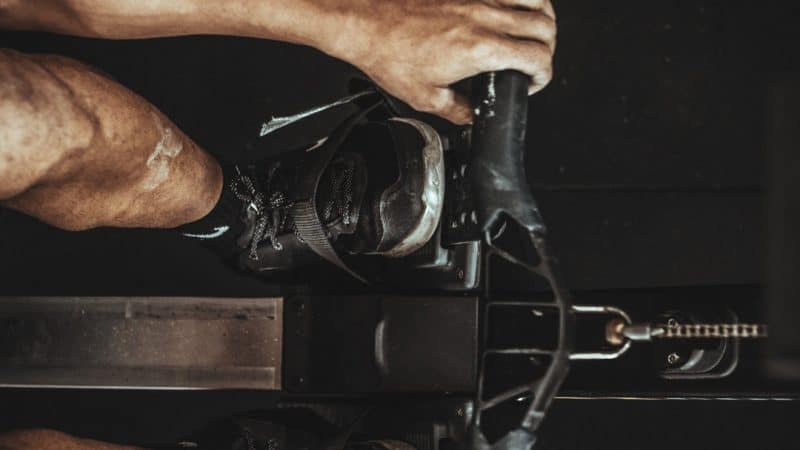Work Harder, Get Stronger: How to Start Weightlifting
Work Harder, Get Stronger: How to Start Weightlifting
The secret to getting stronger isn’t much of a secret. It’s weightlifting. We’ll show you how to start weightlifting and begin your journey to a stronger you.
Weightlifting has been one of the most popular fitness methods, for good reason.
Weightlifting does more than bulk you up. Strength training has a myriad of benefits; you gain more strength, you burn fat, and you’re able to keep more fat off for a long time.
Here’s the catch: many newbies aren’t sure where to start. Here’s how to start weightlifting.
To PT or Not to PT
When a beginner starts their weightlifting journey, they often debate about hiring a personal trainer, or a PT.
There are many benefits of hiring a personal trainer. A trainer can identify your current fitness stance and fitness goals and can develop an effective weightlifting routine for you.
The Benefits of Hiring a Trainer
Beginners can easily get lost in the myriad of weightlifting machines, weight types, and lifting techniques. Trainers are experienced in all of these areas.
Trainers are also your best bet to ensure you lower your injury risk and are in correct form.
Personal trainers are also beneficial if you plan on competing in competitions or if you need to lose an exceptional amount of weight. Trainers can provide fitness and diet tips to get you in the best shape of your life.
Trainers also closely monitor your routine, your progress, and provide constant motivation for slackers.
When to Not Hire a Trainer
What if you have a decent amount of strength training experience but are simply altering your weightlifting regimen? You’ll still benefit from a trainer. But if you’re comfortable with lifting, you can try developing your own fitness routine.
More PT Information
If you have regular (once a week) personal training sessions on top of solo workouts for at least a year, you’ll gain enough education and comfort in your fitness routine.
While hiring a trainer is almost guaranteed to give you the results you want, by going out and conquering your fitness goals, you’ll likely still gain the results you want. So hiring a trainer is a choice that you should consider.

How Much to Lift?
The weight you lift depends on the results you want.
Contrary to popular belief, you don’t have to lift extremely heavy to increase your strength, tone your body, and even bulk up.
Weights are separated into a few categories:
- Light
- Moderately Light
- Moderate
- Moderately Heavy
- Heavy
Here’s a more detailed explanation of each weight type.
Light
These are weights you can pick up with ease. You won’t feel any strain and can even make it throughout your full set without feeling any tension.
Moderately Light
Differentiating between moderately light and light weights are difficult at work. With moderately light weights, you should still be able to pick up the weight with ease. But at the end of your set, you’ll feel a little bit fatigued.
Moderate
When you first lift a weight at moderate strength, you can easily lift the weight but you will have to use extra effort compared to the previous two weight types. You’ll likely feel fatigued after your set, but not completely exhausted.
Moderately Heavy
This is where most people train. You’re able to pick up the weight but still feel like you need to make an effort for each rep. But you’re still able to achieve correct form and have a lower injury risk.
Heavy
It’s ill-advised beginners lift heavy on their own without the aid of a trainer.
You’re not able to easily lift the weight and have to use all of your strength and effort to even do a rep. You’ll find doing each rep difficult and will feel completely exhausted after your set.
Which Weights Should You Lift?
For best results, you should lift all weights. Different workouts call for different weight types. You’ll also notice certain muscles can lift heavier than other muscles.
For example, you probably notice you can lift moderately heavy when you do bicep curls. But you have to decrease your weight significantly when you lift shoulders.
That’s because most people, men and women, are used to lifting with their arms and not lifting overhead.
The Different Types of Weights
When most beginners think of weightlifting, they usually only think of dumbbells and bars. While these are crucial weight types, there are many types of weights and they all have their benefits.
Here are the most basic weight types:
- Barbells
- Dumbbells
- Machines
- Cables
- Kettlebells
- Standalone weight plate (the weights that go on machines – you can also use these alone)
Which ones should you use? You’ll have to take your fitness goals and weight preferences into consideration. But beginners should try each weight type.
If you’re working legs, deadlift with barbells. When squatting, use kettlebells or a weight plate.
Then, use dumbbells for lunges. There’s a myriad of hamstring exercises you can do on the cables. There are also many machines that increase your leg strength, such as the leg press.
After you experiment with all weight types, you can substitute certain weight types with those you prefer.

Reps and Sets
“Reps” and “sets” appeared a few times in this article. As a beginner, you may not know what this teams. When you start weightlifting, you’ll realize how often you use this information.
A rep is each time you lift a weight. Reps are often combined with something called a set. Most weightlifters do two or more sets of a specific number of reps.
For example, let’s say you do 20 reps of ab crunches. You break the 20 reps up into two sets. This means when you do ab crunches, you do two sets of 10 reps.
How Many Reps and Sets?
Now that you know what reps and sets are, you’re probably wondering how many you should do.
Well, this depends on the workout and the weight you’re lifting.
Let’s make this easy and break up the reps-weight ratio in three categories: light, moderate, and heavy lifting.
Since heavy lifting requires lots of strength, several reps aren’t required for heavy lifting. But you won’t get results with light lifting unless you increase your reps.
Here are general numbers to remember:
- Light lifting: 40-50 reps
- Moderate lifting: 20-30 reps
- Heavy lifting: 5-10 reps
You can break the rep count in as many sets as you need. Unless you’re lifting heavy, most lifters do sets of 10-15 reps.
How Reps and Weight Affect Your Results
When you start lifting and make fitness friends, you’ll hear a ton of advice. Some people will tell you to lift lighter with more reps or lift heavier with fewer reps.
The truth is, both methods are effective. But every weightlifter is different.
Lifting heavy with fewer reps forces your body to use maximum strength. This results in quicker results; your strength will increase, you’ll bulk up, and get toned quickly.
But lifting only at your maximum not only increases your injury risk, but you’ll be less flexible. If you decide to jump into maximum lifting, go back and forth between heavy lifting and using lighter weights or resistance bands.
So you may think lifting lighter weights with more reps is the solution. But this depends on the results you want. If you want leaner and toned muscles, lifting light is the way to do it. You won’t bulk up or increase your strength as quickly.
This method is more challenging for beginners than they would expect. Lifting light requires endurance – something you develop when you gain experience lifting.
It’s easy to immediately feel fatigued after the 25 rep mark, especially when you’re supposed to reach 40 or 50 reps for one exercise.
No method is better than the other. It all depends on your weightlifting goals.
Creating a Routine
Finally, it’s time to create a routine. Many weightlifters focus on one area, such as arms or abs, in one day.
It’s also important to do cardio; have a cardio day or two each week and do about 10-15 minutes of cardio after lifting to burn more calories.
And never forget to stretch! Stretching decreases your risk of injury and you’ll improve your flexibility.
First, decide what you’re training. To start, you can divide your days between upper body (arms, chest, and back), core (abs) and legs (hamstrings, glutes, and hips).
After you’re comfortable lifting, you’ll know your muscle groups and can devote days to one or two specific muscle groups.
Then, take about five minutes and stretch out those muscles.
And now you can start lifting! To start out, don’t go too intense. Take about 15 or 20 minutes to lift.
End with a little bit of cardio. Once you become more experienced, you can stop post-workout cardio or replace it with light lifting or resistance bands. The goal is to burn extra calories but cool off from the intensity of weightlifting.
Now You Know How to Start Weightlifting
Our 21 Day Body Transformation Challenge combines diet and exercise to transform your look. If you want to turn heads for the right reasons, find out more here.






Recent Comments